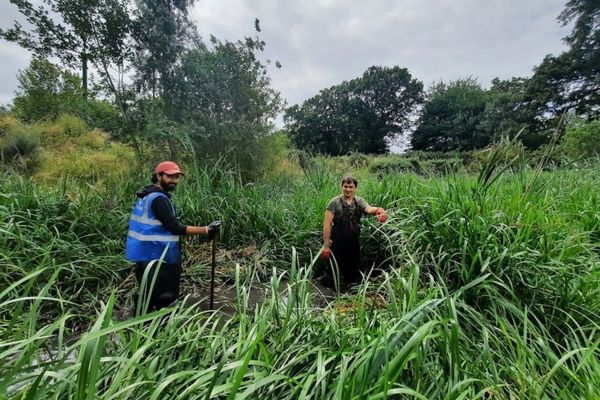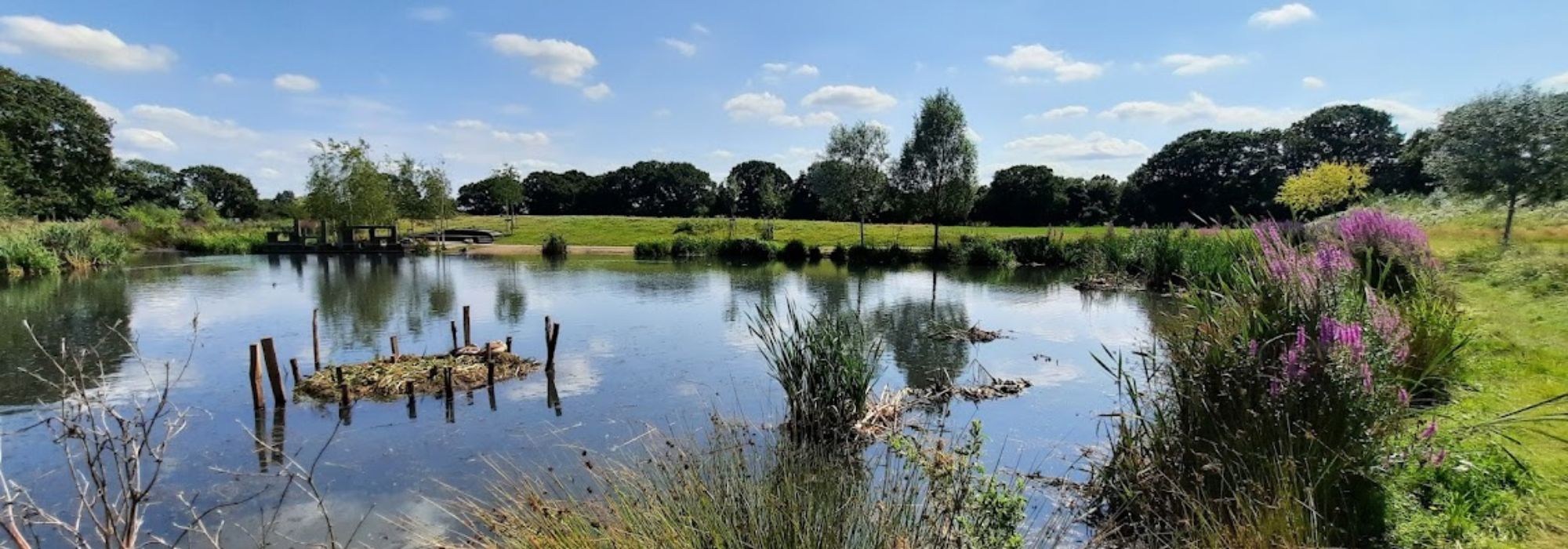World Wetlands Day – The value of constructed urban wetlands to river health and fighting the climate crisis

This World Wetlands Day, Thames21 wants to cast a spotlight on constructed urban wetlands. These seasonally or permanently flooded areas are specifically designed to utilise natural processes to treat polluted water in urban areas (ZSL, 2021), but their benefits are far reaching and valuable to both river health and addressing the climate crisis.
The primary goal of most constructed urban wetlands is to combat water pollution issues in surface runoff and our river channels. They are incredibly efficient at their job by slowing water flows and allowing polluting particles to settle as sediment rather than to be transported further into our waterways. Wetland plants then use these pollutants as nutrients to grow, meaning that the water leaving a constructed urban wetland is usually significantly less polluted than the water entering it.
When connected to the river channel, constructed urban wetlands work to replicate natural river-floodplain interactions. These relationships are often lost in urban environments as rivers are confined to unnaturally straightened channels with steep, and sometimes concrete lined, banks. Reconnecting the two features can enhance habitat diversity along the river which allows the system to support a greater number of different animal species, including the critically endangered European eel which uses wetlands as a migration refuge.
Tackling the climate emergency
During high rainfall events, which are becoming more frequent with climate change, constructed urban wetlands can protect areas from flooding by slowing and retaining both surface water runoff and river flows. In times of drought, this water retention comes in handy again to provide a water source for wildlife, like birds and mammals, as well as a refuge for aquatic species like frogs.
The benefits of wetlands don’t stop there, they can directly contribute to mitigating the climate crisis by storing carbon which gets taken up by wetland plants as they photosynthesise*. So, whether directly connected to a river or developed in a boggy park corner, wetlands act as a nature-based solution for water quality improvements, biodiversity enhancements, and the fight against climate change.
One of Thames21’s recent projects – Rewilding the Rom – saw the development of a constructed urban wetland connected to the River Rom in the London Borough of Barking and Dagenham. This wetland project aims to reduce flood risk in the local area and diversify the river habitat. To support this, Thames21 is now developing the wetland habitat through a series of planting events, including the creation of a wet woodland through the Trees for Climate grant and direct wetland planting to improve pollution filtration.
If you are inspired by World Wetlands Day to help in the development of this all-important constructed urban wetland, you can join us as a volunteer for these planting events using the links below:
Monday 13th February – preparing the ground for tree planting
https://book.timetospare.com/e/UDvyVWsNyGIdgzSdS1Zo
*Photosynthesis is the process by which plants use sunlight, water, and carbon dioxide to create oxygen and energy in the form of sugar
